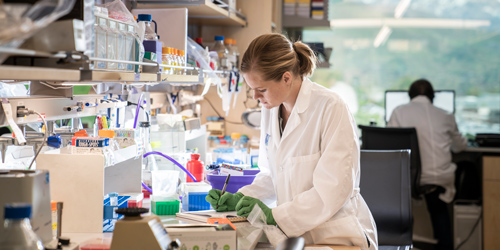
Quantitating any substance in a solution needs an analytical method that can precisely and reliably quantify that substance. Similarly, in biotech and pharmaceutical companies, bioanalytical methods are required to measure biological entities or drugs in biological samples. The whole process of drug discovery and development rely on various quantitative studies. All types of studies, be it pharmacokinetics vs. pharmacodynamics, toxicology, bioavailability, and bioequivalence, require a validated and reliable assay to quantitate the test drug in biological fluids. That is why assay development and validation of several bioanalytical methods have become an indispensable exercise in biotech and pharmaceutical companies. Regulatory authorities also demand extensive reports on bioanalytical method development and its validation supporting the clinical study data.
Bioanalytical assay development
A bioanalytical method includes different steps, which are as follows:
- Sampling,
- Sample preparation,
- Analysis,
- Calibration, and
- Data evaluation and reporting.
Bioanalytical assays are usually developed to quantify a drug in biological fluids like blood, plasma, serum, urine, feces, and saliva. Thus, the development of bioanalytical assay is quite challenging due to the complexity of the biological samples. Sample preparation is one of the most crucial steps during assay development. This step comprises the removal of interfering components and sample clean-up for the analysis step. A robust, fast, and high-throughput assay procedure is desirable for any bioanalytical method. Thus, method development services providers put all their efforts into designing a bioanalytical assay that could offer all the desired characteristics. Calibration of the bioanalytical assay provides the relationship between the drug concentration (independent variable) and the response (dependent variable). Generally, a mathematical equation is generated to make the calculations easy. In the end, data obtained from assay procedures are calculated and evaluated.
Validation of bioanalytical methods
Bioanalytical assay validation is crucial for establishing its specificity, accuracy, precision, sensitivity, and reproducibility. Reliable and accurate bioanalysis is most important in clinical research. Assay development services providers must ensure the validity of the developed bioanalytical method. According to the United States Food and Drug Administration (USFDA) the validation protocol must:
- verify the operating conditions and limitations,
- check method suitability for its proposed purpose, and
- ensure that the method is optimized for sample analysis.
Validation methods are of three different types:
- Full validation: It is required when a whole new bioanalytical procedure is developed. It should follow all Good Laboratory Practices.
- Partial validation: Modification in an already validated bioanalytical method requires a partial validation protocol to re-establish its reliability.
- Cross-validation: It is done to compare two or more bioanalytical methods used for the same study.
Conclusion
Drug analysis and quantification are indispensable in the drug research and development process. Every study, from early drug development research to final clinical trials, requires a robust and high-throughput bioanalytical method. Researchers follow GLP practices to identify and utilize a method best suited to their study or research. Moreover, the validation of all the bioanalytical procedures employed during the study is crucial for successful drug development. Thus, both method development and validation procedures demand a considerable share of investment in clinical research.